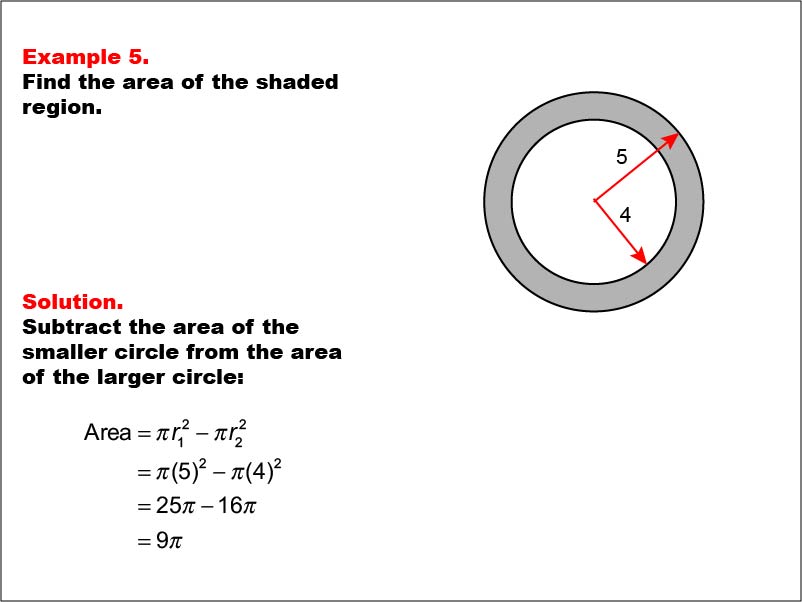
Display Title
Math Example--Area and Perimeter--Circular Area and Circumference: Example 5
Display Title
Math Example--Area and Perimeter--Circular Area and Circumference: Example 5

Topic
Geometry
Description
This example features two concentric circles with radii of 5 and 4 units. The task is to calculate the area of the shaded region between these circles. The solution involves subtracting the area of the smaller circle from the area of the larger circle: A = π * (5)2 - π * (4)2 = 25π - 16π = 9π.
Concentric circles and shaded regions introduce students to more complex geometric concepts. This example builds upon basic circular area calculations, encouraging students to think about the relationships between different circles and how to find areas of composite shapes.
Presenting multiple examples with varying complexities helps students develop problem-solving skills and recognize patterns in geometric calculations. This approach fosters a deeper understanding of how to apply formulas in different contexts and interpret results effectively.
Teacher: "Consider why we subtract the areas in this problem. How does this relate to the concept of area? Can you think of a real-world situation where calculating the area between two circles might be useful?"
For a complete collection of math examples related to Circular Area and Circumference click on this link: Math Examples: Circular Area and Circumference Collection.
| Common Core Standards | CCSS.MATH.CONTENT.7.G.B.4 |
|---|---|
| Grade Range | 6 - 8 |
| Curriculum Nodes |
Geometry • Circles • Area and Circumference |
| Copyright Year | 2013 |
| Keywords | area, circumference, circle |